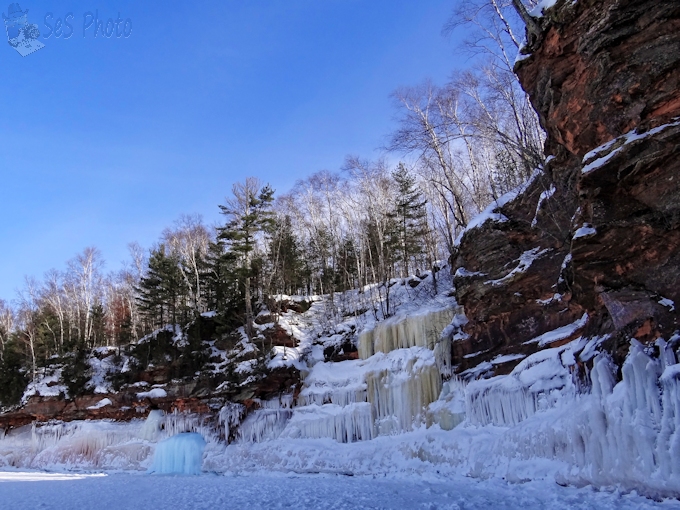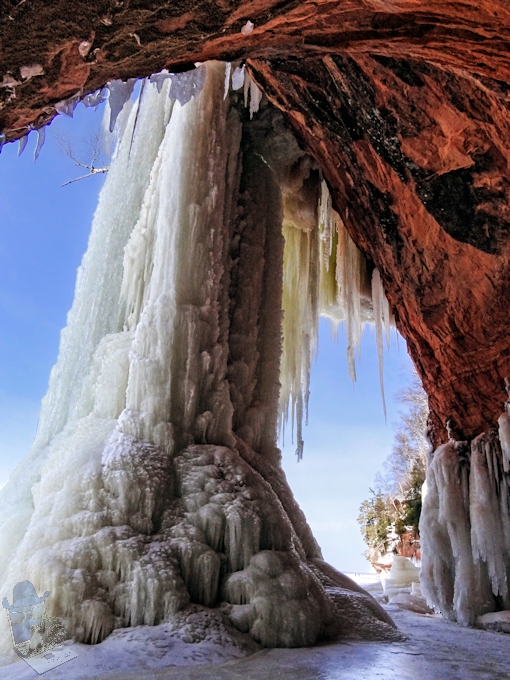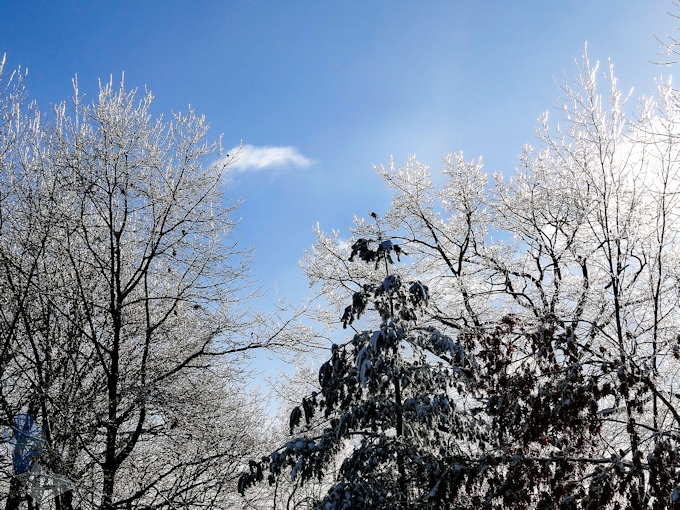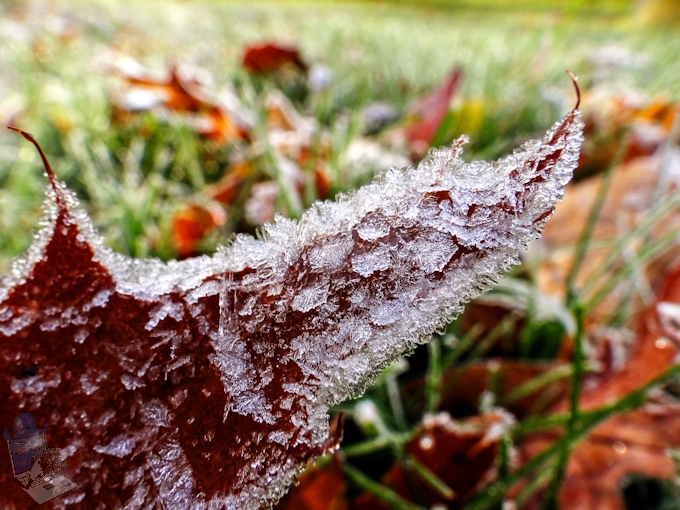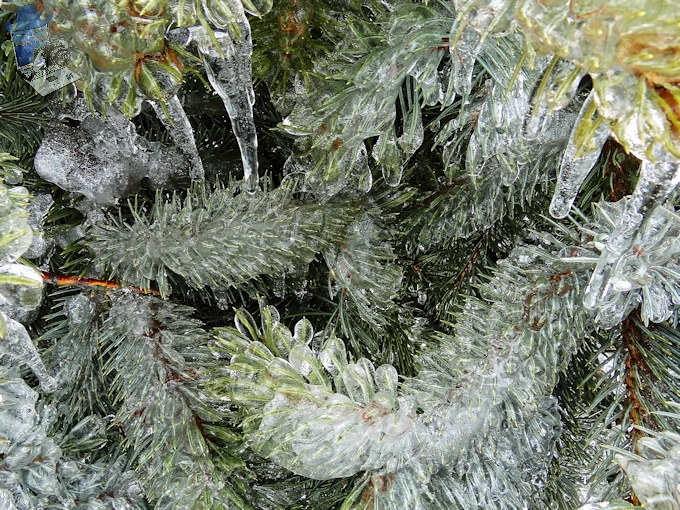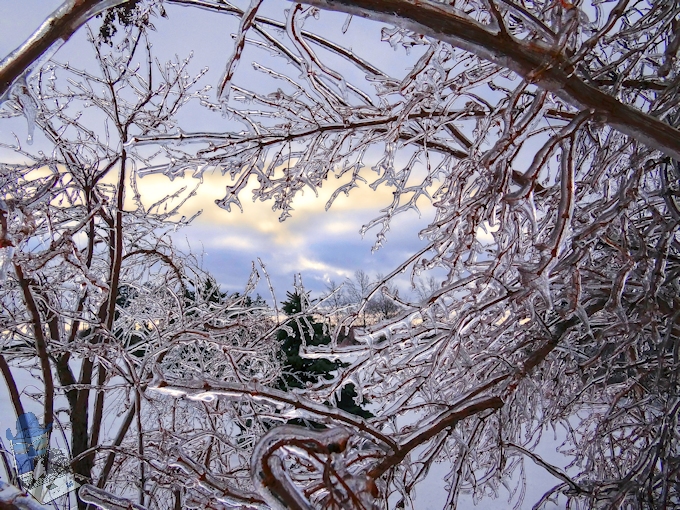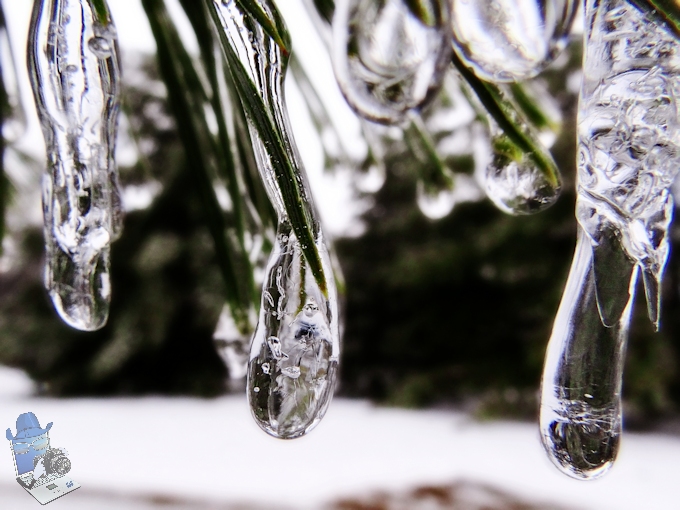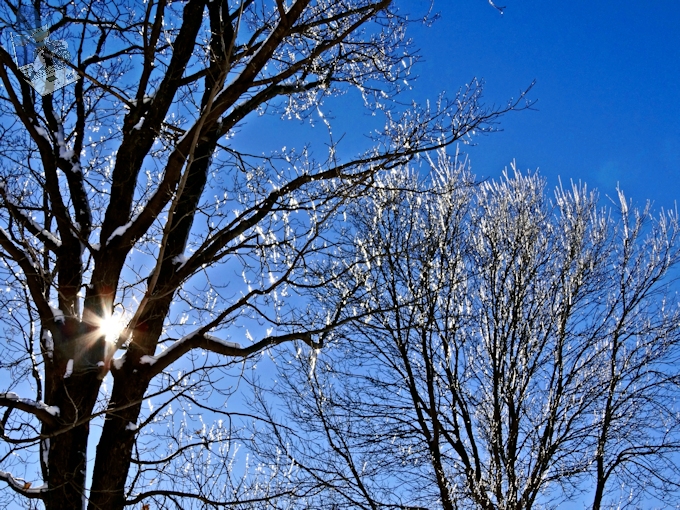Besides the ice caves on the shore of Lake Superior, there were frozen water falls to view which might just be a little a wet trickle in the summer but it creates a large frozen falls in the winter.
The ice also appears different colors, like the yellow or pink, which picks up sand grains from the sandstone. And then in certain spots you can find blue ice, which is caused by how light is absorbed in the snow and ice and the difference in wavelength from the red spectrum to the blue. Water and ice behaves like a blue filter, which absorbs the reds and orange, and why deeper water appears blue.
Snow is composed of a bunch of ice grains with air in between them and almost all of the visible light striking the snow is reflected back and appears white. But in ice, there is less air and so fewer opportunities for light to scatter back out and light travels farther into the ice and gives the ice more time to absorb the red light so when the light returns to the surface, it is lacking red light, making it appear blue.
Colorful Ice


